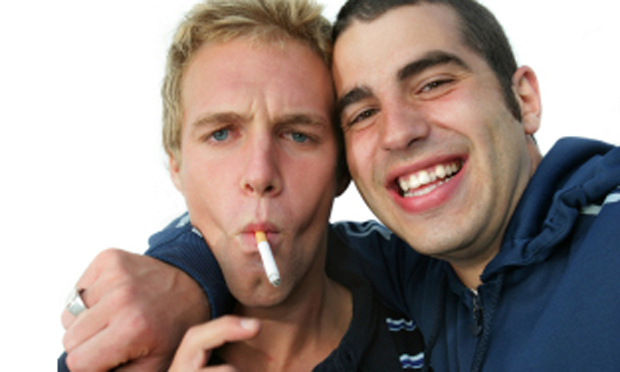
More Americans died from complications related to smoking in 2011 than from HIV/AIDs, illegal drug use, alcohol use, motor vehicle injuries, suicides and murders combined. According to the Centers for Disease Control and Prevention, more than 80% of adult smokers start before they are 18 years old.
While youth smoking rates significantly declined between 1997 and 2003, 18% of Hispanic high school students had smoked at least one cigarette as of 2009. Earlier research suggests that peer behaviors were primary factors, but it was unclear if this was facilitated by an environment that condones smoking — or by a single friend who smokes.
A 2012 study from the University of Southern California and the University of Texas in the Journal of Adolescent Health, “A Comparison of Peer Influence Measures as Predictors of Smoking Among Predominately Hispanic/Latino High School Adolescents,” investigated what drives teens to start smoking. Researchers tracked 1,950 students from seven majority-Hispanic high schools in Southern California over a two-year period. Participants were asked to report if they smoked and to compile a list of their friends and indicate who smoked. A student’s popularity was determined by how many times he or she was listed as a friend by others.
Key study findings include:
- “Popular students become smokers earlier than less popular ones. The dynamic model results here further underscore that the behavior of popular peers may strongly influence the community norms and subsequent behaviors of other adolescents.”
- The probability of becoming a smoker in 10th grade increased by 67% for those named as friends by many people in the school compared to those named by a few.
- “An increase in perceived friend smoking was associated with becoming a smoker. Conversely, only the baseline friend self-report measured as a proportion had a significant association with smoking and only in the 10th grade initiation model.”
- Contrary to previous studies, this study proposed that peer perceptions of who smokes are actually lower than the true number of other students who reported smoking: On average, respondents estimated that 17% of friends were smokers; yet when those friends were interviewed, the self-reported smoking rate was 27%.
- Within the seven high schools studied in Los Angeles, 25.6% of teens reported smoking in 9th grade and 28.1% reported smoking in 10th grade.
The researchers conclude that “adolescents become smokers by having smoking friends, and smokers will make friends with smokers. Popular students initiated smoking earlier than their less popular peers.” They added that, contrary to earlier research, “this was not a product of being exposed to more peer smoking, rather was a function of popularity alone…. This study underscores the need to continue designing peer-based behavior change programs.”
Tags: Hispanic, youth, Latino
